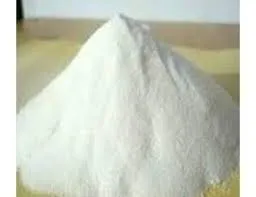
okt . 22, 2024 03:23 Back to list
Exploring the Quality and Characteristics of HPMC Grades for Various Applications
Understanding the Grades of Hydroxypropyl Methylcellulose (HPMC)
Hydroxypropyl Methylcellulose (HPMC) is a versatile and widely used polymer in various industries, including pharmaceuticals, food, construction, and cosmetics. It is a cellulose ether derived from natural cellulose, modified to enhance its properties. HPMC serves a variety of functions as a thickener, binder, film-former, and stabilizer, making it an essential ingredient in numerous formulations. One of the critical aspects of HPMC is its grading system, which determines its specific applications based on performance characteristics.
The Grading System of HPMC
HPMC is available in various grades, each designed for particular applications. The grades are primarily differentiated by their viscosity, degree of substitution, and intended use. Understanding these grades is crucial for manufacturers and formulators to select the appropriate HPMC type for their needs.
1. Viscosity The viscosity of HPMC solutions plays a pivotal role in determining how it will behave in different applications. HPMC is categorized into low, medium, and high viscosity grades, with specified viscosity ranges measured in centipoise (cP) at a specific concentration and temperature. Low-viscosity HPMC, for example, is typically used in applications requiring lower thickening capacity, while high-viscosity grades are suitable for products needing significant thickening, such as gels and creams.
2. Degree of Substitution The degree of substitution refers to the number of hydroxyl groups on the cellulose molecule that have been replaced by hydroxypropyl and methyl groups. This characteristic influences not only viscosity but also solubility and gel-forming properties. Higher degrees of substitution generally enhance solubility in water and improve the polymer’s ability to form stable gels, which is advantageous in pharmaceutical and cosmetic formulations.
3. Application-specific Grades HPMC grades are often tailored for specific applications. For example, pharmaceutical-grade HPMC is manufactured under stringent regulatory conditions to ensure purity and safety for use in drug formulations. In contrast, food-grade HPMC is suitable for use in food products, providing thickening, stabilization, and texture-enhancing properties without compromising safety. Construction-grade HPMC is designed to improve the workability of cement-based products, ensuring a longer open time and optimal adhesion properties.
grades of hpmc

Key Applications of HPMC Grades
1. Pharmaceuticals In the pharmaceutical industry, HPMC is commonly used as a binder in tablets, a film-coating agent, and a controlled-release formulation component. The choice of HPMC grade can significantly affect the release profile of the active ingredient, making it essential to use the correct viscosity and degree of substitution.
2. Food In food applications, HPMC serves as a thickener, emulsifier, and stabilizer. The grades used in food formulations must meet specific safety standards and are often selected based on their ability to improve texture and shelf-life without affecting flavor.
3. Cosmetics HPMC is widely used in cosmetics and personal care products. Here, it acts as a thickening agent in lotions, creams, and gels, providing the desired consistency while ensuring ease of application.
4. Construction In the construction industry, HPMC grades are utilized in adhesives, mortars, and cement-based products. They enhance workability, extend open time, and improve the adhesion of various materials, ensuring the durability and effectiveness of the final product.
Conclusion
The diverse grades of Hydroxypropyl Methylcellulose (HPMC) highlight its adaptability and significance across multiple industries. Understanding the grading system of HPMC is imperative for formulators seeking to optimize product performance and meet specific application requirements. As industries continue to innovate and evolve, the role of HPMC and its various grades will undoubtedly expand, paving the way for new applications and improvements in existing formulations. Whether in pharmaceuticals, food, cosmetics, or construction, HPMC remains a vital ingredient that contributes to the quality and efficacy of a wide range of products.
-
Versatile Hpmc Uses in Different Industries
NewsJun.19,2025
-
Redispersible Powder's Role in Enhancing Durability of Construction Products
NewsJun.19,2025
-
Hydroxyethyl Cellulose Applications Driving Green Industrial Processes
NewsJun.19,2025
-
Exploring Different Redispersible Polymer Powder
NewsJun.19,2025
-
Choosing the Right Mortar Bonding Agent
NewsJun.19,2025
-
Applications and Significance of China Hpmc in Modern Industries
NewsJun.19,2025







